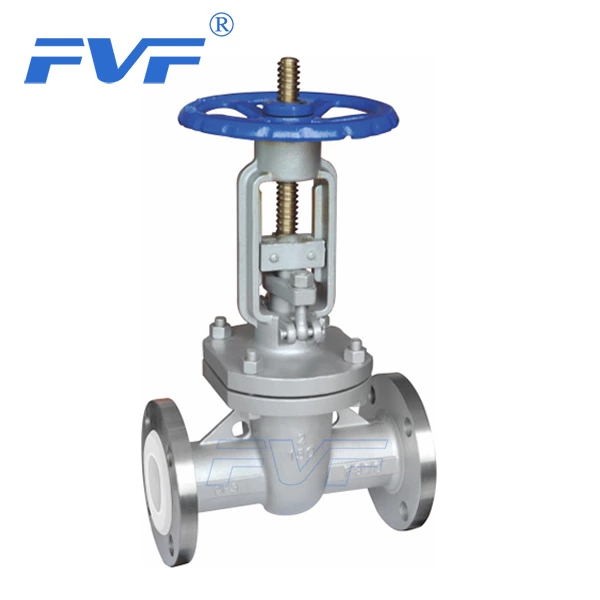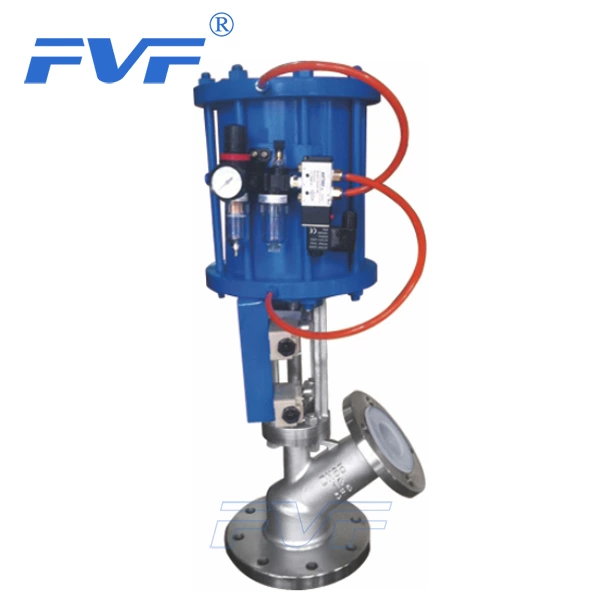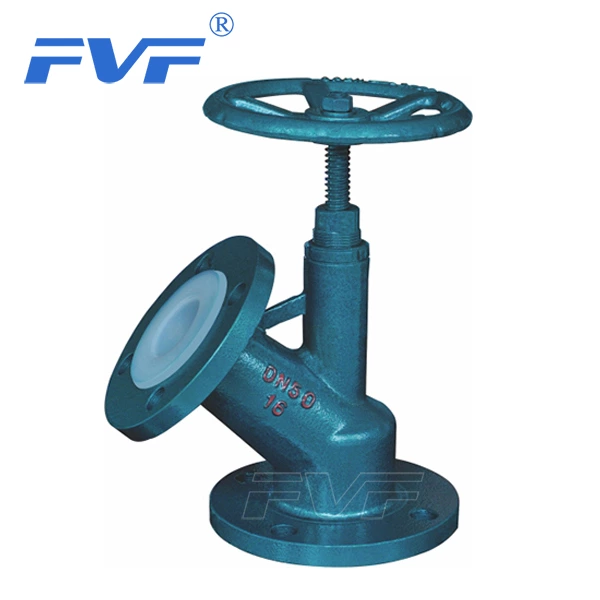Use And Operation Of Metal Hard Seal Ball Valve
Lined Ball Valve is used in low-pressure, small-diameter pipelines to cut off water flow and change water flow distribution or in places where rapid opening and closing is required.
Features of hard-sealed ball valves:
(1) Low flow resistance;
(2) Simple structure;
(3) Small size and light weight;
(4) The sealing surface material of the current ball valve is plastic, which has good sealing performance;
(5) Easy to operate, quick opening and closing, and convenient for remote control;
(6) Easy to maintain, the sealing ring is generally movable, and it is easy to disassemble and replace;
(7) When fully open or fully closed, the sealing surface of the ball and the valve seat is isolated from the medium, and the medium passing through will not cause erosion of the valve sealing surface.
Classification of ball valves
(1) Commonly used ball valves are divided into floating ball valves, fixed ball valves, lifting rod ball valves, etc. according to their working principles.
(2) Ball valves can be divided into straight-through, three-way and right-angle types according to their channel positions. The latter two types of ball valves are used to distribute the medium and change the flow direction of the medium.
Construction and installation points
(1) The installation position, height, inlet and outlet directions must meet the design requirements, and the connection should be firm and tight.
(2) For all types of manual valves installed on insulated pipes, the handles must not be facing downward.
(3) The appearance of the valve must be inspected before installation, and the nameplate of the valve should comply with the provisions of the current national standard "General Valve Marking" GB 12220. For valves with a working pressure greater than 1.0 MPa and valves that serve as cut-off valves on the main pipeline, strength and tightness performance tests should be carried out before installation, and they can only be used after passing the test. During the strength test, the test pressure is 1.5 times the nominal pressure, and the duration is not less than 5 minutes. The valve body and packing should be leak-free to be qualified. During the tightness test, the test pressure is 1.1 times the nominal pressure; the test pressure during the test duration should meet the requirements of GB 50243 standard, and the valve disc sealing surface should be leak-free to be qualified.
(4) Install a gasket between the valve flange and the pipeline flange according to the pipeline design requirements.
(5) For ball valves with transmission mechanisms, install them according to the product instructions.
Implementation standards
(1) Product standards
"General valve flanges and butt-welded steel ball valves" GB/T12237-89
"Iron and copper ball valves" GB/T 15185-1994
"General requirements for steel valves" GB/T 12224-2005
"Safety evaluation standard for drinking water transmission and distribution equipment and protective materials" GB/T 17219-1998
(2) Engineering standards
"Construction quality acceptance code for building water supply, drainage and heating projects" GB 50242-2002
"Construction quality acceptance code for ventilation and air conditioning projects" GB 50243-20
Instructions
1. Before installing and operating the valve, make sure that the inside of the pipeline and the valve body channel have been cleaned.
2. The operation of the ball valve is to drive the valve stem to rotate according to the driving mode of the actuator to complete the opening and closing. When the ball valve rotates 1/4 circle (90°) in the forward direction, it is closed. When it rotates 1/4 circle (90°) in the reverse direction, the ball valve is open. 3. When the direction indicator arrow of the actuator is parallel to the pipeline, the valve is in the open state; when the indicator arrow is perpendicular to the pipeline, the valve is in the closed state. Methods to reduce maintenance: To make the hard-sealed ball valve have a longer service life and maintenance-free period, the valve must be kept under normal working conditions, maintain a harmonious temperature/pressure ratio, and meet the corrosion data of the valve body material. Precautions during maintenance: When the ball valve is in the closed state, there is still pressure generated by the pressurized fluid inside the valve body. Before repairing the valve, the internal pressure of the pipeline must be relieved and the valve must be in the open position. Disconnect the power supply or gas source, and separate the actuator from the bracket. Then the disassembly work can be carried out for maintenance. When disassembling and reassembling, care must be taken to prevent damage to the sealing surface of the parts, especially non-metallic parts. When removing the O-ring, special tools should be used.
When reassembling the valve, the bolts on the flange must be tightened symmetrically, step by step, and evenly.
The cleaning agent should be compatible with the rubber parts, plastic parts, metal parts and working media (such as gas) in the ball valve. When the working medium is gas, gasoline (GB484-89) can be used to clean metal parts.
The disassembled individual parts can be cleaned by immersion. Metal parts with non-metallic parts that have not been disassembled can be scrubbed with a clean, fine silk cloth soaked in cleaning agent (to prevent fibers from falling off and adhering to the parts). When cleaning, all grease, dirt, glue accumulation, dust, etc. adhering to the wall surface must be removed. Non-metallic parts should be removed from the cleaning agent immediately after cleaning and should not be soaked for a long time. After cleaning, the cleaning agent on the washed wall surface must be evaporated (it can be wiped with a silk cloth that is not soaked in cleaning agent) before assembly, but it must not be left for a long time, otherwise it will rust and be contaminated by dust. New parts must also be cleaned before assembly. Use grease for lubrication. Grease should be compatible with the metal materials, rubber parts, plastic parts and working media of the ball valve. When the working medium is gas, special 221 grease can be used, for example. Apply a thin layer of grease on the surface of the seal installation groove, a thin layer of grease on the rubber seal, and a thin layer of grease on the sealing surface and friction surface of the valve stem. Metal debris, fiber, grease (except for specified use), dust and other impurities, foreign matter, etc. should not be allowed to contaminate, adhere or stay on the surface of the parts or enter the inner cavity during assembly. If a small amount of leakage occurs at the packing, the valve stem nut should be tightened again. Note: Do not tighten too tight. Usually, the leakage will stop if you tighten it another 1/4 turn to 1 turn.






